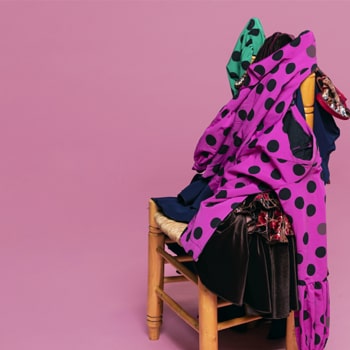N
Nuevo Flamenco
In the mid-1970s, new forms of flamenco began to emerge. It was first a natural and purer evolution under the influence of Paco de Lucía and Camarón de la Isla. While styles of foreign influences began to enter the music, during this time flamenco still kept its roots. Other innovations often came from blending modern music styles, creating flamenco fusion - a stronger mix of flamenco with jazz, Latin music, global music, and rock. Very talented international artists adopted parts of the flamenco styles, while others used their native musical heritage to create the new flamenco.
O
Olé
Word of encouragement often shouted by the public and other artists. It is a common expression in the ruckus of a performance.
P
Palmas
The rhythm in flamenco music played with the hands.
Palos
They describe the different types or styles of flamenco. These styles are known as flamenco styles. Each style has its differences, based on regional and cultural influences, time signature or rhythmic pattern, as well as sentiment. There are three basic palos: cante chico, which is lighter and more optimistic in its mood, cante grande or cante jondo, which is more melancholic, and cante intermedia, which basically contains all the other styles of flamenco that are not They fit into the first two categories.
Paso
The individual movement of a dance. Together, the steps form the choreography of the dance.
Peña
Asociación Cultural Flamenca or the fan club where flamenco is often performed.
Peteneras
The origin of the peteneras is controversial; Many place them in the province of Cádiz as a form that evolved from the traditional Spanish dance known as zarabanda. Others have noted similarities with the songs performed by the Sephardic Jews of Andalusia.
Pitos
The snap of the fingers.
Polo
It is a flamenco style; there is only one known song that is classified as a pole. Similar to the rhythm of the soleá, it is often considered an evolution of the caña, a well-known form of flamenco.
R
Rasgueo
The touch of the guitarist on the strings of the guitar, thus causing the vibration of two or more strings simultaneously with the fingers.
Rumba flamenca
It originated in Spain by incorporating some of the rhythmic styles of the Afro-Cuban rumba. The percussion in the flamenco rumba is generally created with more traditional Spanish methods such as castanets, clapping, and more recently, the cajon. The flamenco rumba has proven to be a popular export, enjoying success in other parts of the world such as Latin America, the United States, and France.
